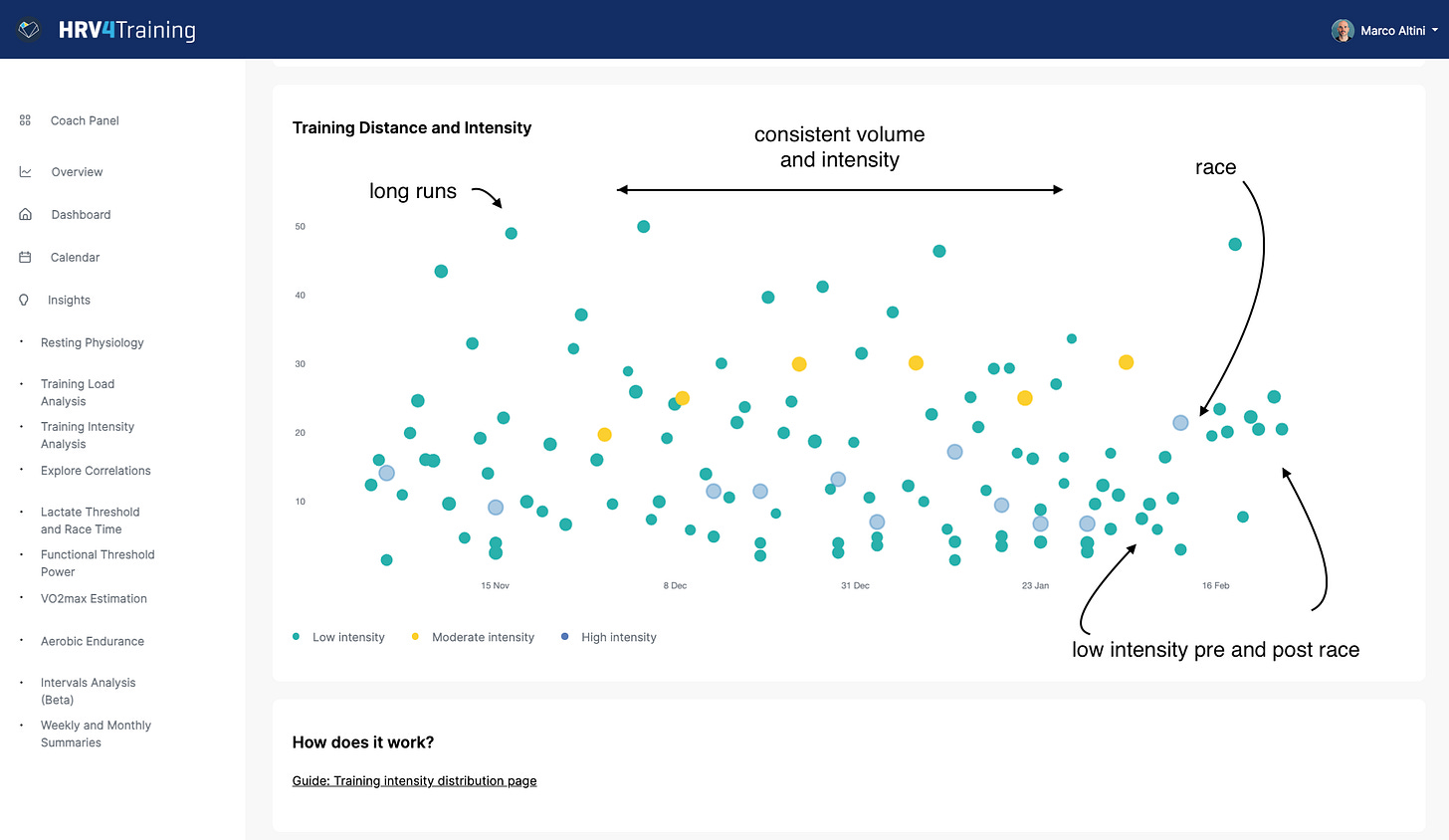Monthly Newsletter: February 2024 ⭐️
heart rate variability, wearables, entrepreneurship, training talk and some ramblings
hi there 👋
I hope all is well.
Here is my second newsletter for 2024. I hope you’ll find it useful and I would like to take the opportunity to thank you for your support.
Please feel free to comment below or in the articles should you have any questions, and I will follow up.
Take care!

Heart rate variability (HRV) 🫀
How should we use heart rate variability (HRV)? I saw two studies recently highlighting common misconceptions of heart rate variability (HRV) and its applied use, hence I took the opportunity to write a few considerations about how we can use HRV. In particular, the misconceptions I am referring to are the following: 1) HRV as a health marker and 2) deep breathing as a tool to increase HRV. In both cases, I think there is a bigger issue with using HRV as a goal metric to improve. Learn more, here.
Can heart rate variability (HRV) be accurately used to gauge daily readiness for physical activity? Following up on the previous post, I received quite a few good questions and addressed this one in a separate blog. Here are some of my thoughts.

Wearables ⌚️
Physiology (heart rate, HRV), or readiness/recovery scores? A few weeks ago I raced a half marathon personal best at the Barcelona half marathon. Here I’m taking the opportunity to show important differences between resting physiology (heart rate, HRV) and made-up readiness or recovery scores, based on the data collected before and after the race. These are key aspects to understand if we want to make use of wearables effectively.
Podcasts, Talks, and articles 🎙️
Podcast: Run DNA with Doug Adams. I had a nice chat with Doug about all things HRV and running, you can find it here.
How much should we listen to our wearable health-tracking devices? A few words from me on The Globe and Mail this week.
Myths And Facts About Heart Rate Variability (HRV). Some pointers here, for Marathon Handbook.
Building 🛠️
HRV4Training Pro. You can find the user guide here. I hope you’ll like the new platform, and would like to thank you for your support (also: use code SCIENCE for 20% off).
New Feature in HRV4Training Pro: Tracking training volume and intensity. I have built and released a new feature in HRV4Training Pro to let you analyze your training in the mid to long term. The idea is to capture an overview of training volume together with the frequency of higher-intensity workouts, as these are two key aspects of our training. See an example below for my recent data.

Training talk 🏃🏻♂️🚴
Barcelona half marathon: training and race report. Two weeks ago I ran a personal best in the half marathon at the Barcelona half (1h 20’ 47”). In this blog, I cover my training leading up to the race, and the race itself.
Training Talk: notes on training zones and training intensity distribution. Last week I shared a tweet in which I was talking about the importance of considering total time spent training when looking at training intensity distribution (% in zones), therefore avoiding to look only at percentages in isolation. A few good conversations followed, and I took the opportunity to write a more comprehensive blog about training intensity and training zones. In particular, I cover “zone 2”, training intensity distribution, differences between cycling and running, how things differ when we are beginners, and more. I also provide an overview of my progress over the years, how training has changed, and what are the takeaways based on performance over different distances. I hope there’s something useful for you in there.
Training log. As the name says, this is simply my training diary for this year.
That’s a wrap for this month,
Thank you for reading, and see you next month.
Recent newsletters:
Marco holds a PhD cum laude in applied machine learning, a M.Sc. cum laude in computer science engineering, and a M.Sc. cum laude in human movement sciences and high-performance coaching.
He has published more than 50 papers and patents at the intersection between physiology, health, technology, and human performance.
He is co-founder of HRV4Training, advisor at Oura, guest lecturer at VU Amsterdam, and editor for IEEE Pervasive Computing Magazine. He loves running.
Social:






